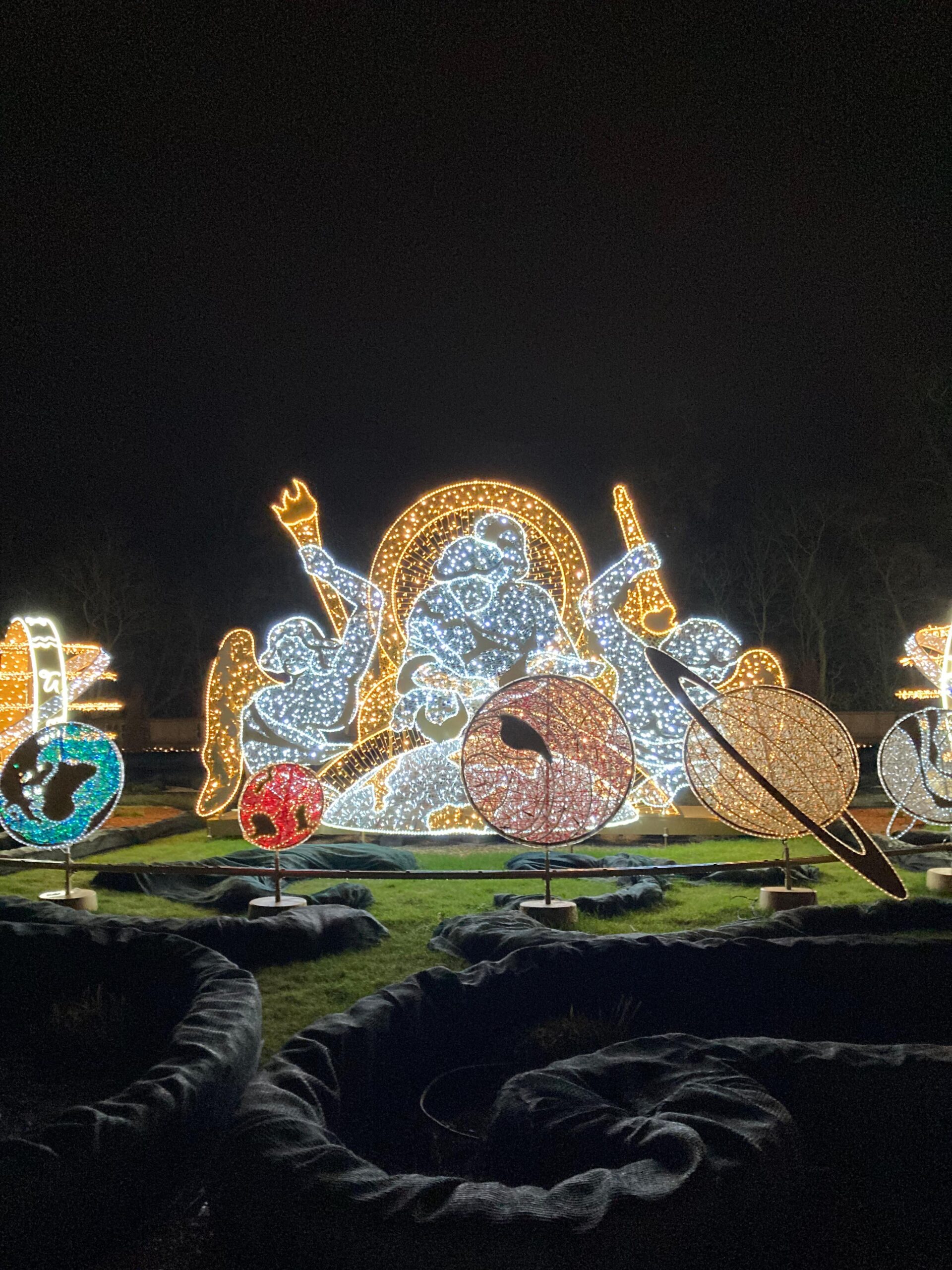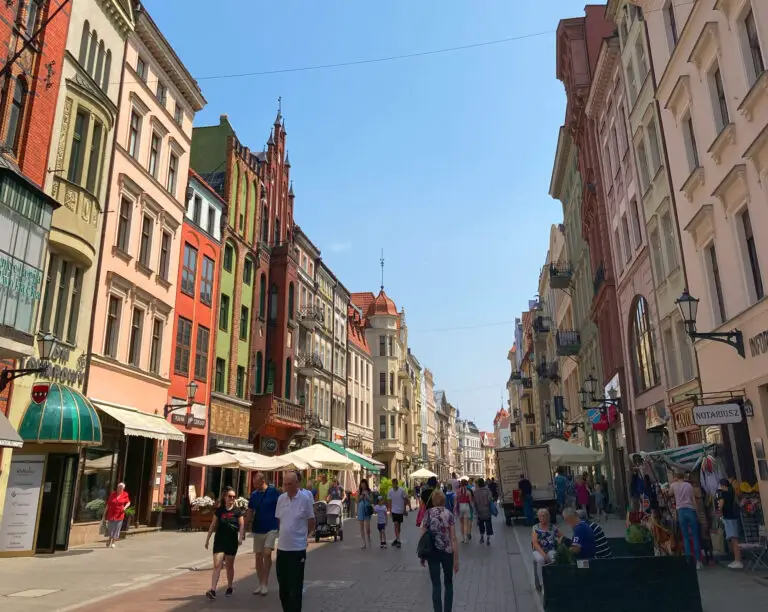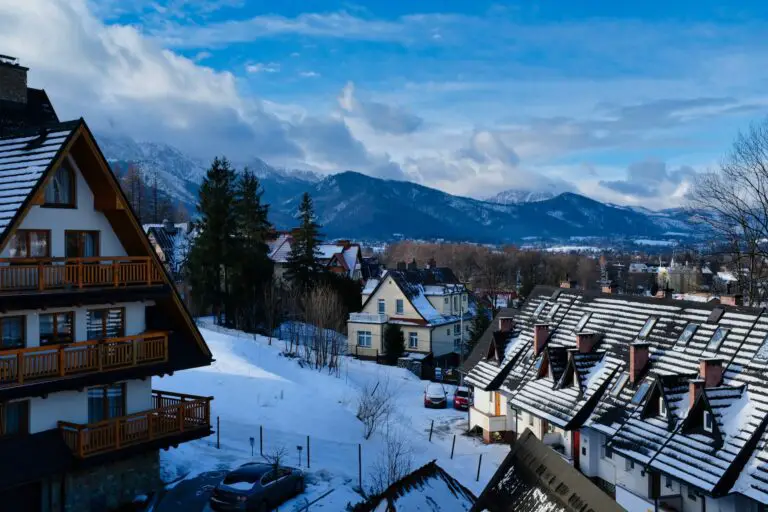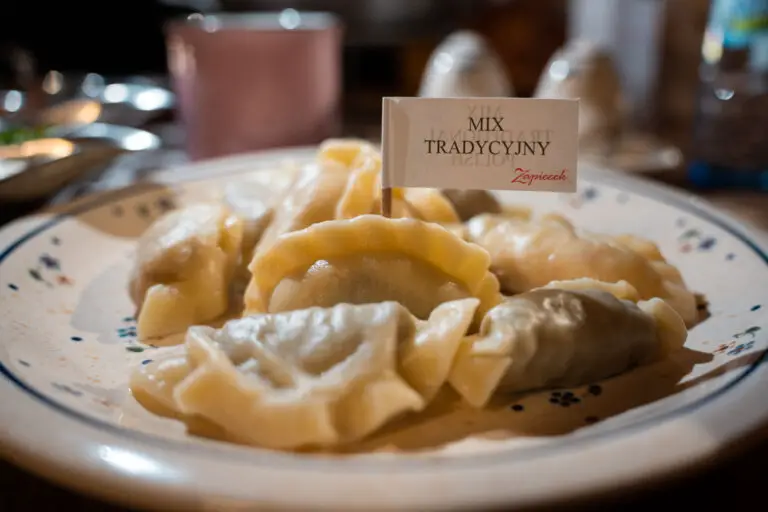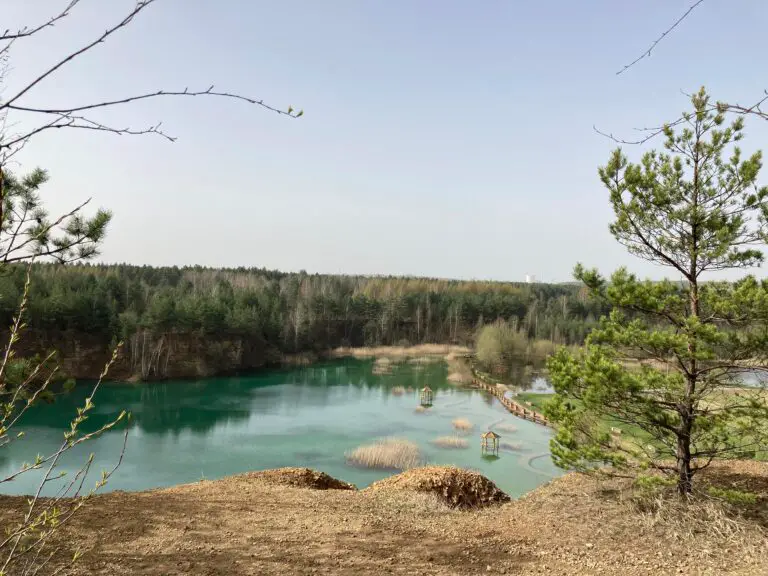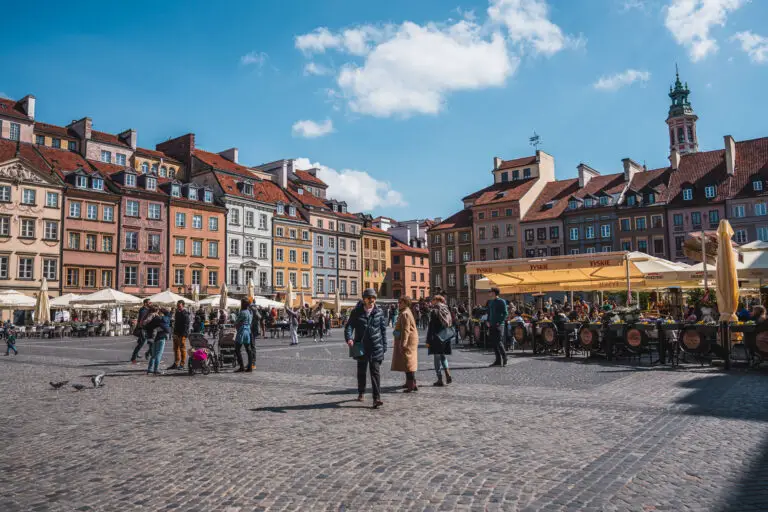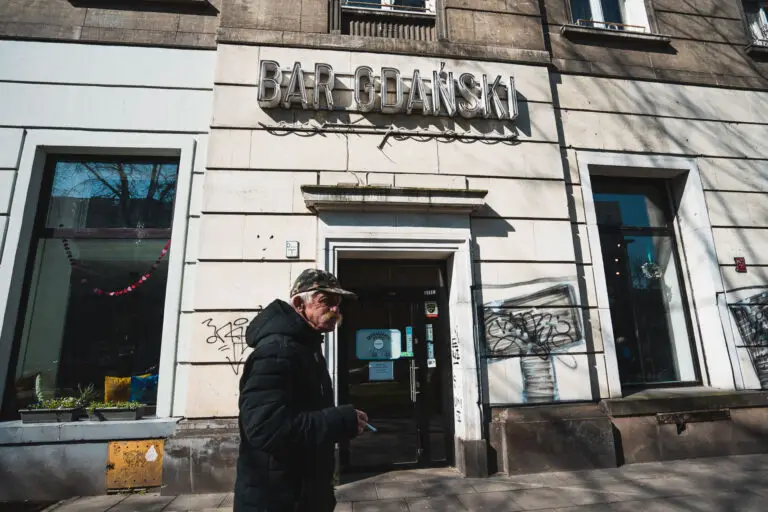5 Best Polish Christmas Traditions: Everything To Know & City Guide
If you are looking for a European country with good Christmas traditions and events, Poland might be a good choice for you. Polish Christmas traditions range from the commonplace in other countries across Europe and the world, to unique superstitions and events that you can only find in Poland. Some traditions are based in Catholicism, the predominant religion in Poland, and some are based on more worldly Christmas traditions, such as having massive Christmas trees and impressive displays of lights.
Whatever way you look at it, Poland can be a magical place to visit in the wintertime, and part of that is the amazing Polish Christmas Traditions that are proudly upheld by Poles today after many centuries of use. Thus, many of the Polish Christmas traditions are such that you will see them more in the house than out of the house. Thus, being invited to a Polish home of Christmas is a splendid opportunity to get to see the history and traditions of the Polish Christmastime, more so than just being in Poland at Christmas. But do not worry, there are still chances even if you cannot make this happen!
This article will hold a list of the 5 best Polish Christmas traditions. In this case, each tradition on the list will have other traditions associated with it! And one entry on the list is even dedicated to all the many superstitions Poles have around Christmastime! Additionally, I include a list of Polish Christmas traditions that you will find in some of the more popular cities around Poland, such as Warsaw, Kraków, and Gdańsk. These things will be more events that have become yearly traditions in the city rather than things you will find in the Polish home, making them accessible for all. Happy traveling in the beautiful Polish winter!
Best Polish Christmas Traditions
1. Mikołajki
Other than perhaps a child’s birthday, Mikołajki is the most important day of the year for Polish children! The name of this holiday is based on St. Nicholas the gift giver, the inspiration for the modern-day Santa Claus. Mikołajki takes place every year on St. Nicholas’ Day, on December 6th. On this day, St. Nicholas comes and gives gifts to good children, just like Santa Claus. Mikołajki does not, however, replace Christmas as the main day for gift giving. Rather, some of the smaller gifts are given on Mikołajki, which then creates more time on Christmas Eve and Christmas Day to spend time with family and go to church, instead of just opening gifts.
Planning to visit Poland soon?
🛫Booking flights to Poland: For booking flights, we love to compare prices on Expedia and Kayak.
🛏️Booking hotels in Poland: When looking for hotels, we recommend using Booking.com and Hotels.com. We stayed at a couple of hotels in Poland and liked the following ones:
- Sofitel Warsaw Victoria (Warsaw)
- Hotel GEM (Wrocław)
- INX Design Hotel (Krakow)
⛪Booking tours in Poland: Viator is a great platform for finding tours and excursions to join.
🛣️Renting a car in Warsaw: Discover Cars is the platform we use when renting a car in Poland.
While different parts of Poland have slightly different versions of how the day goes, all involved a giver of gifts giving small gifts to children who have behaved well throughout the year (although all children are going to get something for Mikołajki in the end). Children might even write a letter to him first writing about all the good things they did in the previous year. Sometimes, St. Nicholas might even challenge the children to recite something from their religious classes. After this, the children will receive some small gifts, usually candies or other sweets, and other small gifts such as little toys, or maybe a chocolate Santa.
Much of Mikołajki might take place in the home, with gifts left under the pillow like the Tooth Fairy. But the traditions often spill out of the home into big public events. A simple way to celebrate this Polish Christmas tradition is to have a small gift exchange at school. But, for those of you coming to Poland who want to see Mikołajki in action, you are in luck. There are often public events to celebrate this former Polish public holiday (although that was centuries ago). St Nicholas may appear in a parade in Polish cities, dressed in a traditional bishop’s dress with a staff and large hat.
Or, you may see some more absurd parades, such as people dressed like Santa Claus riding motorbikes or paddleboarding on the Vistula River in Kraków! Other regions in Poland have slightly different traditions. In the western parts of Poland, Gwiazdor, or the star man, gives gifts to children in a manner like the German figure of Krampus (so imagine a bit scarier). Or, in some more religious parts, the gifts are brought not by the saint, but by Baby Jesus or a small angel.
Regardless of where you are visiting in Poland, if you are in Poland on December 6th, something is probably going on for Mikołajki. Check local tourist websites for the Polish city you are staying in to see if there are any parades or festivities happening. If you are in a town with a Christmas Market, it is likely St. Nicholas will come to visit that day and there will be some ceremony. If not, you can take part in this Polish Christmas tradition by buying a small gift or candy for your loved ones and kids. Overall, Mikołajki is certainly one of the best Polish Christmas traditions.
2. Wigilia
While Mikołajki indicates the start of the Christmas season, Wigilia is the most important part of the Christmas holiday season in Poland and for Catholicism in general. Because of this, Wigilia is associated with a large list of Polish Christmas traditions, and heavy with religious symbolism related to the birth of Jesus. In fact, the word Wigilia is derived from the Latin word vigil, to watch, and thus much of the symbolism of the day is related to waiting. Wigilia takes place every year on Christmas Eve, December 24th, and is the real Christmas Day in Poland!
There are many important parts of Wigilia, and perhaps the most important is food! The Wigilia meal is perhaps the most anticipated meal of the year in Poland. All of the best Polish Christmas food is served. Typically, 12 dishes are served to match the number of apostles in the Bible. Additionally, the food is traditionally all vegetarian except for fish, due to Catholic traditions about avoiding beef, pork, chicken, and other red meats on Christmas. The main dish is often carp of herring, served in a variety of sides. Other important foods include makowiec, which are poppy seed cakes, which are alleged to bring good luck to Poles each year.
The Wigilia meal is usually done with the whole central family, so it can be quite a loud and rowdy affair! However, one tradition that unites all Poles is the breaking of the opłatek. Opłatek is a bland unleavened wafer often designed with Catholic and Christian symbols and historical figures. The use of opłatek is simple: it is used to grant blessings to those around the table. The opłatek is passed around the table, and each time it is passed, a small piece is broken off, and a wish for good fortune is granted to someone at the table, or the whole group. This process is perhaps the most important Polish Christmas tradition that is part of Wigilia.
There are a few other Polish Christmas traditions you will see in place on the dinner table during the Wigilia meal. Firstly, it is traditional to not start the meal until the first star appears in the sky. This is symbolic of the Star of Bethlehem that guided the Magi. Because the sun sets so early at this time of year, it does not take long for this to happen. Two other traditions are related to the birth of Jesus. The first is leaving a small bunch of hay on the table to symbolize the manger. The second is to leave an empty chair in case of an unexpected guest, which could even be Jesus.
Unfortunately, the best way to experience all the traditions and delicious food of Wigilia is to be in a Polish home. That is not the easiest thing to achieve, as Poles, while generally friendly, are not likely to invite you into their home unless they really know you. It is hard to say whether you can find a place in the city you are staying that will create this experience for you, as Poland shuts down on Christmas Eve. However, you can make many of the dishes yourself, and create your own Polish Christmas tradition using the widespread information available about Wigilia if you really wanted to!
3. Pasterka
Pasterka is a tradition that you would be able to find in other countries in the world as well. It stems from Catholic traditions related to celebrating the birth of Jesus on Christmas. Pasterka is essentially the Polish version of a midnight Mass. However, the time of worship is not the important part. Rather, the important part is the scripture and prayers used. Pasterka stems from the Polish word for shepherd, and the message is related to the waiting shepherds referenced in the Bible.
Poland is overwhelmingly Catholic, and even those who do not go to Mass that often will attend Pasterka at the minimum. It usually follows right at the Wigilia meal is completed. There will be Mass starting as early as 8 PM, for those with younger children who will not be able to stay up until midnight. Then, there are further services until the final one. All services involve imagery related to the birth of Jesus, with Bible verses, carols, and other words spoken related to this event. It is usually subdued.
Upon the completion of the Mass service, the unofficial meat ban is lifted, and Poles will celebrate with some cold meat or other food with meat, usually quite early in the morning. Additionally, Poles may choose to open the more major gifts that were not opened earlier in the month at this time. Thus, the celebrations of Wigilia can end extremely early in the morning. But, given that the next two days of Christmas are more laid back and dedicated to family time, you do not have to worry about losing too much sleep!
Now, I understand that some of you reading this may not be Catholic, or even Christian, which means this entry may not be that much of interest to you. However, there is no ignoring the fact that Pasterka is one of the most important and well-practiced of the Polish Christmas traditions. Even during the Nazi occupation of WWII, Pasterka was still practiced, even in the face of strict punishment for breaking curfew. Poles do not take their religious beliefs lightly, and this reflects in this Christmas tradition.
If you visit family or friends around Christmas, you should expect most of them to take part in this tradition. And they may choose to invite you. Of course, saying no should not be considered rude (unless they are a super religious sort perhaps). And of course, there is a language barrier if you do not speak Polish. But attending is a chance to experience a hallowed day for Poles, and better understand their culture and belief system. Whether you want to attend or not, Pasterka is present as an important Polish Christmas tradition.
4. Jarmarki Bożonarodzeniowe
The title of this section may make it seem like this is some fancy Polish Christmas tradition. This would be half correct. Jarmarki Bożonarodzeniowe is the Polish way to say Christmas Markets! Christmas Markets are one of the grandest European traditions at Christmas, and Poland does not exclude itself from starting some holiday cheer through month long markets full of delicious food, drink, and a mix of touristy and hand-crafted souvenirs, as well as fun events. You will find a Christmas Market in almost every major city in Poland, some that have traditionally been organized since as early as the 16th century!
Christmas Markets in Poland are easy to find. They are typically in a main part of the city, whether in the city’s direct center or at its most popular destination. For example, you will find the Kraków and Wrocław Christmas Markets in their famous and picturesque Market Square, some of the beautiful landmarks of Poland. In Warsaw, it is spread throughout the historic Old Town. In Łódź, it is on the 5-km Piotrkowska Street. So, not only will you get to appreciate the Christmas Markets, but also you will get to see some of the main sights of Poland along the way!
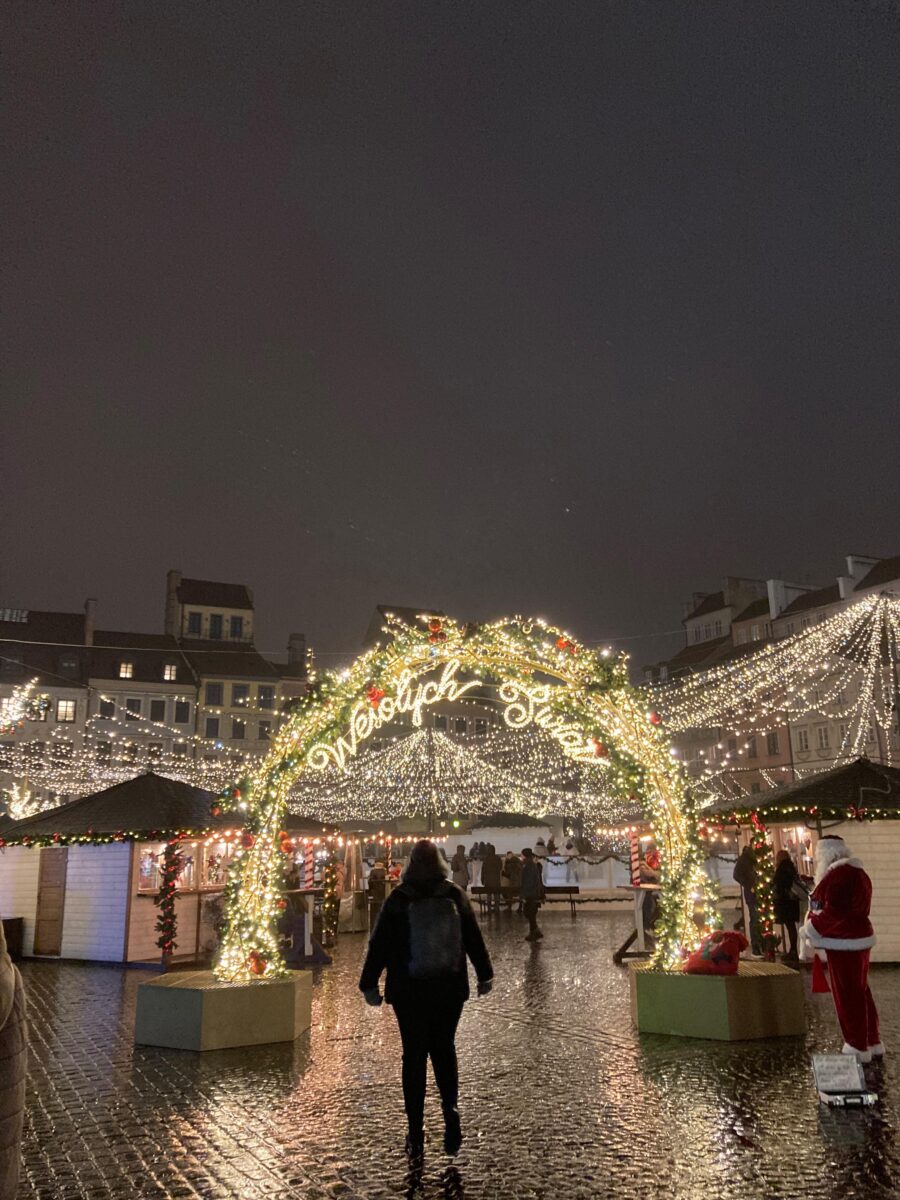
Each Christmas Market will be centered around a massive Christmas tree, usually real, covered in lights and ornaments. Around the tree will be stalls, sometimes large or small depending on the city’s size. Here, you will be able to shop (or just window shop) to your heart’s content. As it is cold, consider getting some grzaniec, Poland’s version of a mulled wine, but it can also be mulled beer or cider. You can also buy some delicious piernik, Poland’s gingerbread. Or you can buy any number of Christmas-themed souvenirs, from ornaments to snow globes.
Additionally, most Christmas Markets will have a calendar of special events going on as well. For example, you are likely to find a celebration of Mikołajki at any Polish Christmas Market, as well as Three King’s Day (more on that later). There will also be chances to meet Santa Claus, listen to concerts, sing carols, or maybe even try some special food. If you get bored of the Market, most of the streets surrounding the Polish Christmas Markets will be full of beautiful Christmas lights, and with long winter nights, there are many opportunities to get some amazing photos of the lights or with the lights.
So, if you are visiting Poland in the winter, you must take part in this most highly regarded Polish Christmas tradition. It is by far the most accessible tradition on this list, and it is honestly the main reason to come to Poland in the winter. Polish Christmas Markets are magical places to visit, even some of the lesser ones like Warsaw’s Christmas Market. Some of the events of Polish Christmas Markets will be later covered in the city-by-city guide at the end of this article, but I strongly recommend the Christmas Markets in Kraków, Wrocław, and Gdańsk if you want to pick a Polish city to visit solely based on its Christmas Market.
5. Przesądy Świąteczne
The Poles are a very superstitious bunch around Christmas. Thus, many Polish Christmas traditions stem from practices that are supposed to bring good luck. This entry holds three Christmas superstitions that many Poles practice, although not all Poles depending on the region. These entries did not fit well under other entries on the list, so I will dedicate a few words here.
- Carp in the bathtub
As was mentioned in the Wigilia section, Poles tend to eat carp, spelled Karp in Poland, as the main dish of the Christmas meal. However, some Poles engage in a superstitious practice involving the carp before preparing it for the meal. The eating of carp itself is superstitious, thought to brought good luck, but some Poles take it a step further by buying the carp leave, and keep it alive for a few days before using it for the Christmas meal. This was done initially in times before refrigerators to keep it fresh, and supposedly makes it taste better.
Nowadays, this practice has faded, and where you once could find aquariums full of carp around Christmas in the local Polish grocery stores. But some more traditional families find a way to keep this tradition alive, and even the Polish diaspora in the UK and other countries still tries to take part if possible. Even if not bought alive, the process of eating carp is a very important superstition and Polish Christmas tradition.
- Talking Animals
According to Polish Christmas tradition and superstition, during Wigilia on Christmas Eve, the animals around you are granted the ability to speak for one night only! No one really knows where this idea came from, but it might be related to the manager scene or to other religious traditions and festivals. Either way, this is a superstition that can be fun for kids, as they try to speak to their family pets, and once this fails, try to guess what their family pets might be saying.
- Christmas Spider
The Christmas spider is a result of an old folk tale about a poor family who came into wealth when sunlight turned the spider webs on their bare Christmas tree into silver and gold. Nowadays, you can just put tinsel to replace the webs, but some Poles will still put a fake spider on their tree, as it is thought to bring good luck. However, I cannot vouch for the popularity of this tradition, as my girlfriend had never heard of it. So, while you may not find it in Silesia, it does appear that it still has a foothold in some places in Poland.
City Guide to Best Polish Christmas Traditions
This next section will hold some brief words about Polish Christmas traditions that are specific to some of the many amazing Polish cities that you can visit. I will focus on 10 of the more-popular destinations that are visited by tourists, whether due to airport transit (like Katowice) or pure appeal (Kraków). All 10 cities on this list can also be found on this list.
All the traditions listed here are 100% accessible to the public, so if you find yourself not being able to take part in the Poland-wide traditions, this part of the article should have you covered. For that reason, these traditions are not necessarily culture-based, but rather based on yearly events that are special or specifically unique to the city listed. However, I picked the events and traditions on this list based on what I know about Poland after living there for a year, and I think they are important parts of the experiencing each town during the winter and Christmas season.
1. Warsaw
For being Poland’s capital and largest city, Warsaw does not necessarily have any special Christmas traditions that are special compared to other cities in Poland. However, you can see their Christmas Market that happens every year in January. In my opinion it is not the best of the best in terms of Christmas markets in Poland, but if you are coming to Warsaw is still worth a visit. The Christmas Market takes place in the Old Town, with also another section in the Market Square where you can ice skate. The Christmas Market is small overall, so there is no need to spend too much time there.
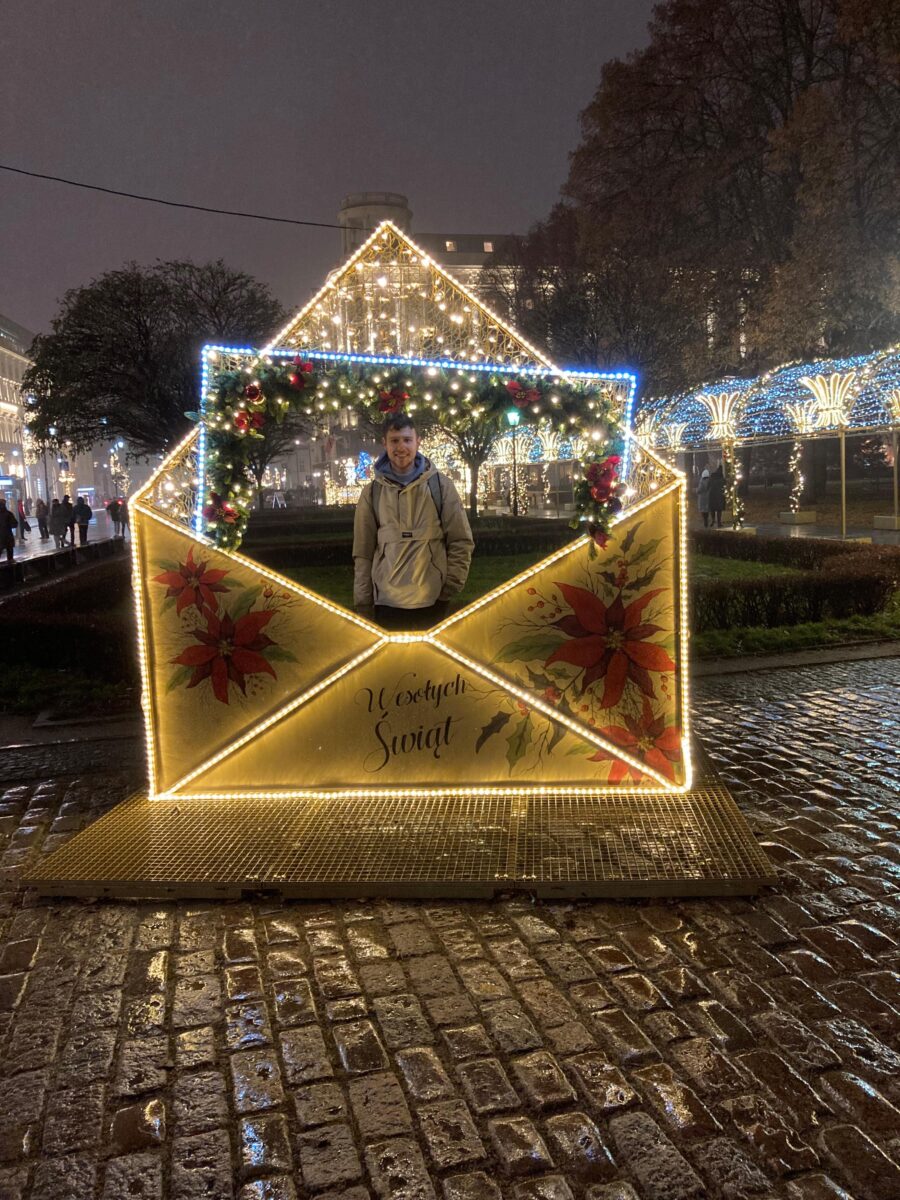
If you are looking for something more special, try to find some of the many places where there are beautiful lights strung up. The easiest place to find these lights is along The Royal Route just South of the Old Town. Here you will find lots of nice lights to take some pictures with. With some snow on the ground, it is also a very magical walk. And of course, there are lots of nice places to grab a warm drink along the way.
If you are looking for another place to go see some nice lights, you should go To Wilanów Palace. One of the best things to do in Warsaw, this palace houses an interesting museum in its beautiful building, but also has well-manicured and beautiful gardens surrounding it. During the winter, these gardens are full of lights and decorations that light up the night sky, making these gardens a perfect place for a romantic walk. Visit their website for information on hours and ticket prices closer to Christmas.
2. Kraków
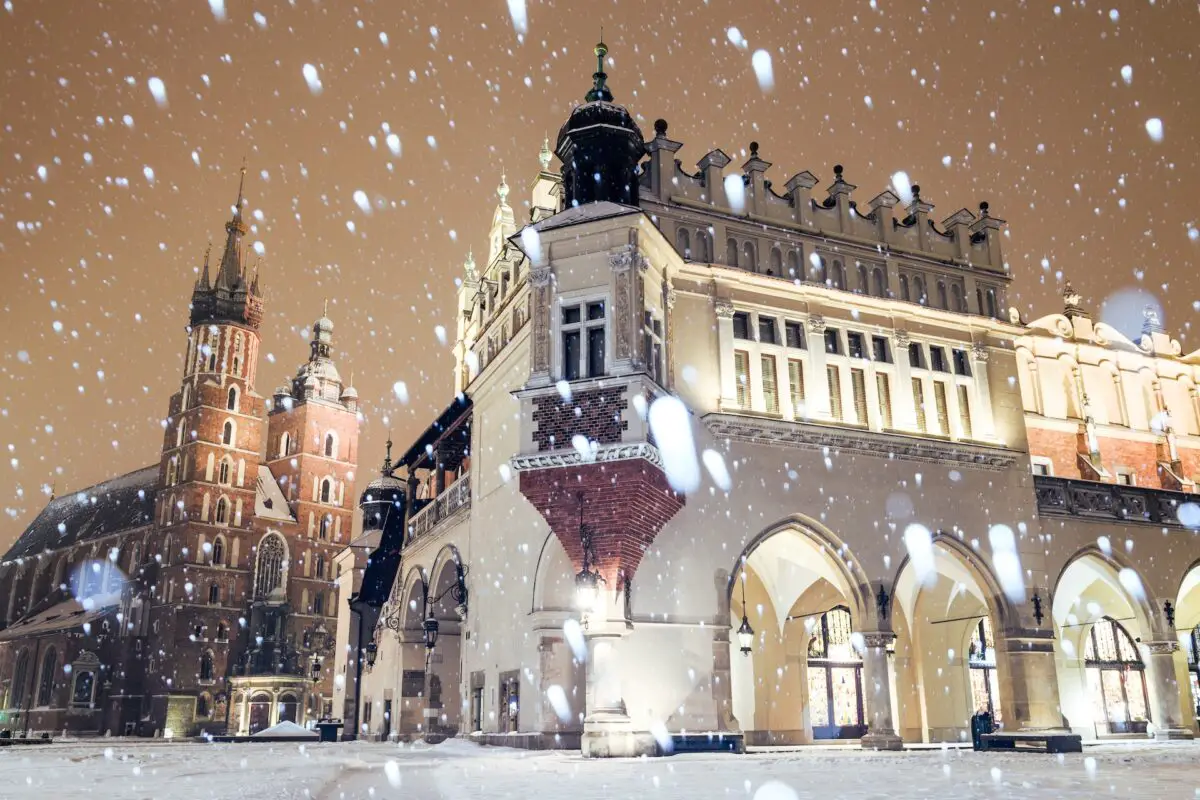
Kraków is a city I have covered in more detail in another article about winter-time activities in Kraków . However, I will briefly cover some of the more tradition-based activities on that list. The main Christmas tradition of Kraków is certainly the Kraków Nativity Display, attached to the picturesque Kraków Christmas Market. Every year, local Cracovians design, build, and decorate elaborate nativities in a competition. Each year, winners are voted on and selected to be featured around the city throughout the winter. Once you have voted, you can enjoy some Polish Christmas food at the Kraków Christmas Market in the UNESCO World Heritage Site Market Square.
Another thing that does happen in Kraków quite often are concerts full of Christmas music and carols. Some take place for free as part of the Christmas market. But, if you have specific tastes, check out Chopin Concert Hall or the Cracow Philharmonic to see what they have on their schedule. Or take advantage of the amazing nightlife in Kraków and find a restaurant or bar with some Christmas music. There are no shortage of options available.
3. Gdańsk
The main Christmas tradition in Gdańsk is also related to their Christmas Market. Each year, there is a ceremonial “lighting of the lamps” that marks the beginning of the Christmas season. This has been a tradition since 1989, which was the first year of the current Polish republic. This event happens together with the arrival of St. Nicholas, and so Santa is present to give out gifts as the tree is lit. So, if you happen to be in Gdańsk on December 5th, head to the Christmas tree found in the Old Town, next to the Statue of Neptune to take part in this event.
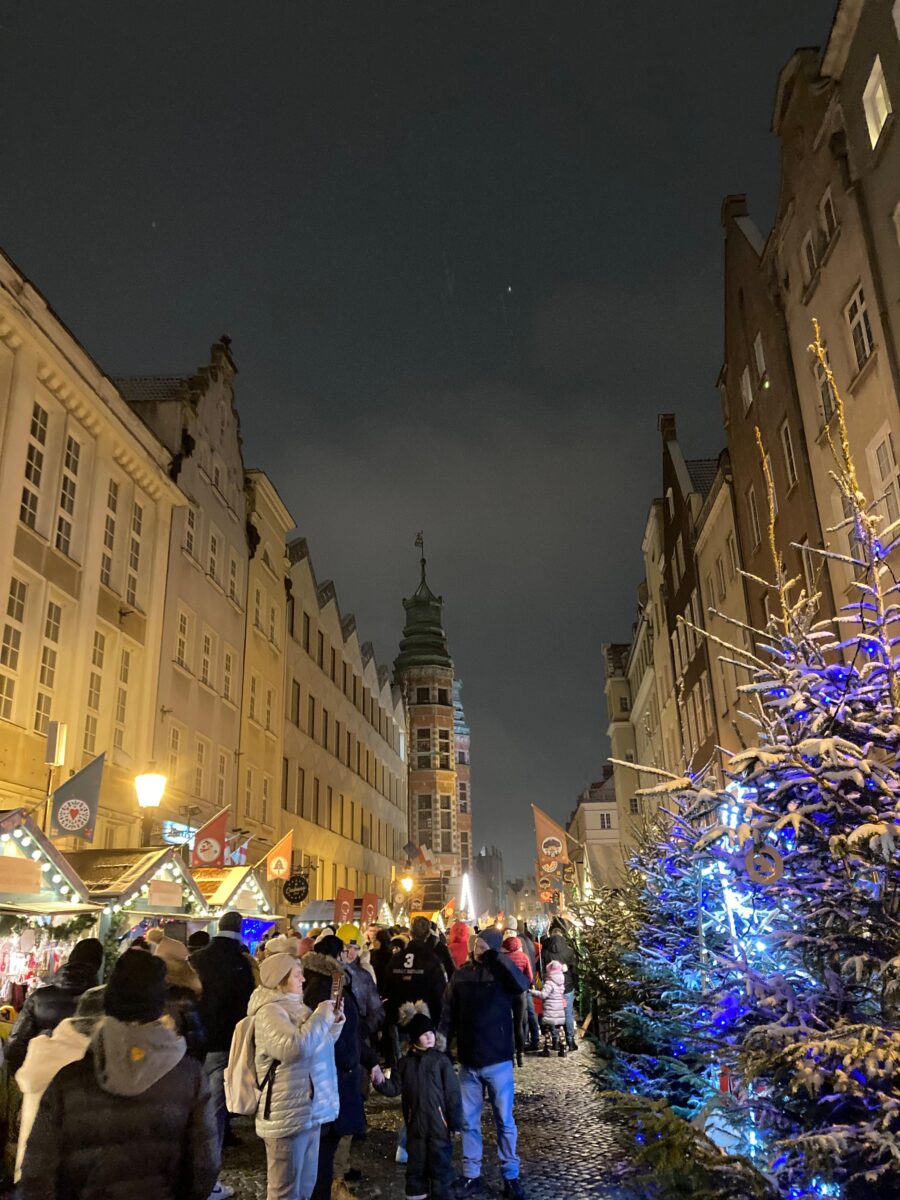
Another smaller tradition in Gdańsk is related to “Christmas Eve.” However, in a sense, this event takes place on the “Eve of Christmas Eve,” on December 23rd, since Wigilia, the most important day, is December 24, the traditional western Christmas Eve. So, on the 23rd, a parade of heavenly and religious figures walks through the Old Town towards the tree, and opłatek is handed out to those watching to give the opportunity to give your best wishes to all those around you.
4. Wrocław
One unique thing you can do in Wrocław on Christmas Day is visit the zoo! Yes, ZOO Wrocław, one of Wrocław’s best things to do and a the most visited attraction in all of Poland, is open 365 days a year, including Christmas. Thus, it has become a sort of tradition for some to visit the zoo on Christmas Day, after the festivities of Wigilia take place on the previous night. Maybe some of the animals might even talk! Visit the zoo website for all the information about the shortened hours at Christmas and everything there is to see and do.
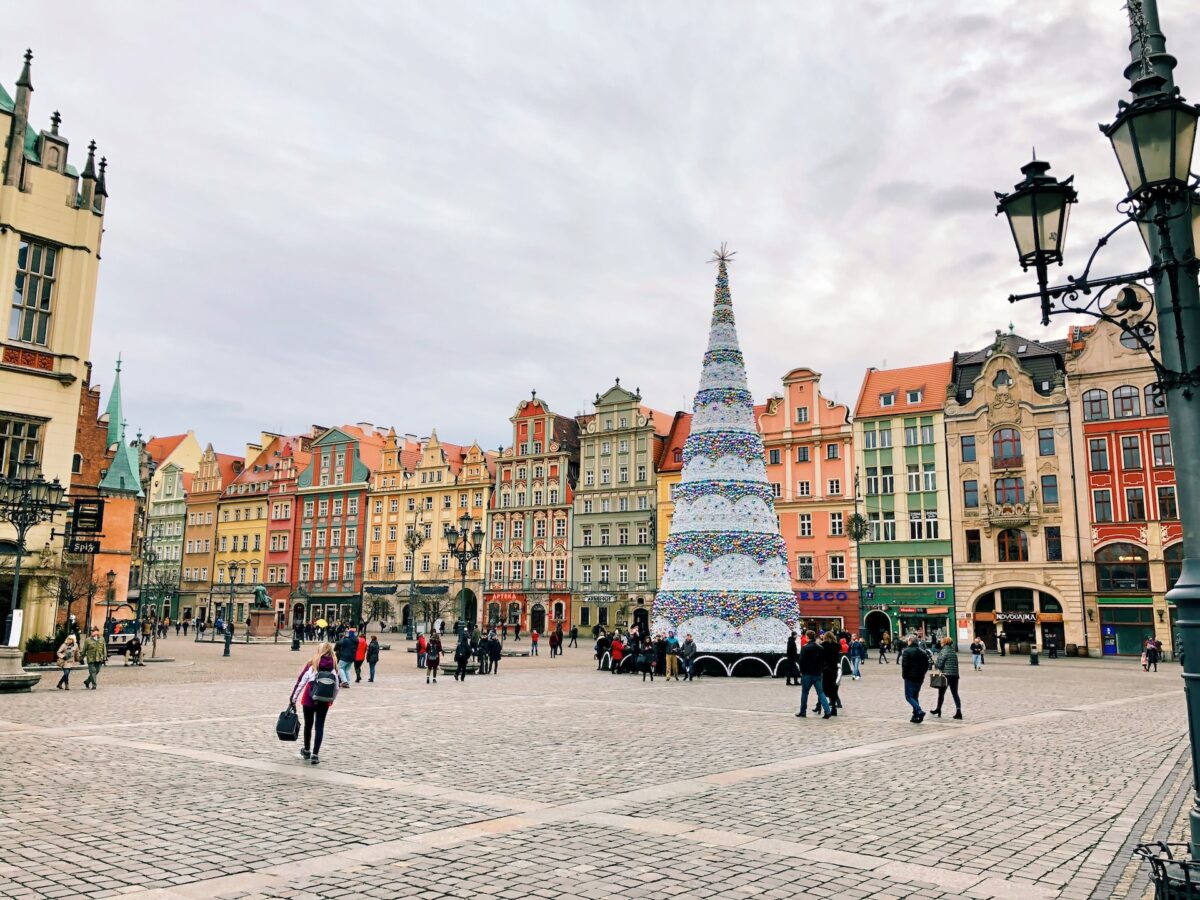
Other than that, Wrocław’s Christmas Market might be the best in Poland to go see. Located in the beautiful Market Square, this central point of the city becomes crowded with booths, lights, and people. There are also lights spread throughout the city, such as a beautiful display on the Lover’s Bridge to Ostrów Tumski, and some of the hundreds of dwarves, a symbol of Wrocław, dotted around the city might even have a Santa hat and scarf on. Visiting the Wrocław Christmas Market should be on your bucket list, it certainly is on my bucket list this year!
5. Zakopane
Zakopane is a winter wonderland that I covered in detail previously in this article. However, Zakopane does not necessarily have any major Christmas traditions. The Christmas tradition is simply visiting Zakopane. But, if you are looking for something a bit special, consider booking a stay at a hotel that includes a Wigilia meal with the booking. This might be the easiest way to experience Wigilia in Poland without being invited into someone’s home. Many hotels offer this package around Christmas. One hotel of note that does it is the luxurious Aries Hotel, which has an entire day of festivities available for those staying on Christmas Eve. Other than that, just enjoy the beauty of Zakopane in the winter!
6. Toruń
The most obvious Christmas tradition in Toruń, a city that is a great day trip from Warsaw, is related to the previously mentioned piernik, Polish gingerbread. Toruń is the city where the tradition of Polish gingerbread originated, where spices from the east and local wheat combined to make this delicious treat. Thus, visiting Toruń to buy and try some piernik is a definite Christmas tradition. If you want to try your hand at making it too, consider visiting the Living House of Gingerbread, where you can learn more about the history of piernik as well as make some to take home with you!
As you may have noticed in other cities, Christmas carols play an important part in Polish Christmas tradition. Toruń becomes the epicenter of this tradition for one weekend every December. Choirs from all over Poland come to Toruń to take part in the Christmas Carols and Songs Festival. Choirs are organized by age groups, with youth and adult choirs present, and they sing two carols in front of a professional jury. Beyond the competition, there is also a concert available with all choirs performing together, with benefits going to charity. Visit here for more information, and I recommend attending this event if you find yourself in Toruń at the right time!
7. Poznań
Poznań is a beautiful Polish city currently under construction (and thus derisively called “Rozkopane” by locals). However, while some of the main sights of the city, including the beautiful Town Square, are not the best to visit at present, the Christmas Market takes place in other beautiful parts of the city, and is worth a visit! There are lots of events going on in tandem with the Market, such as a Silent Disco, and the official lighting of the Christmas tree! Do not miss the market if you are in Poznań during the winter.
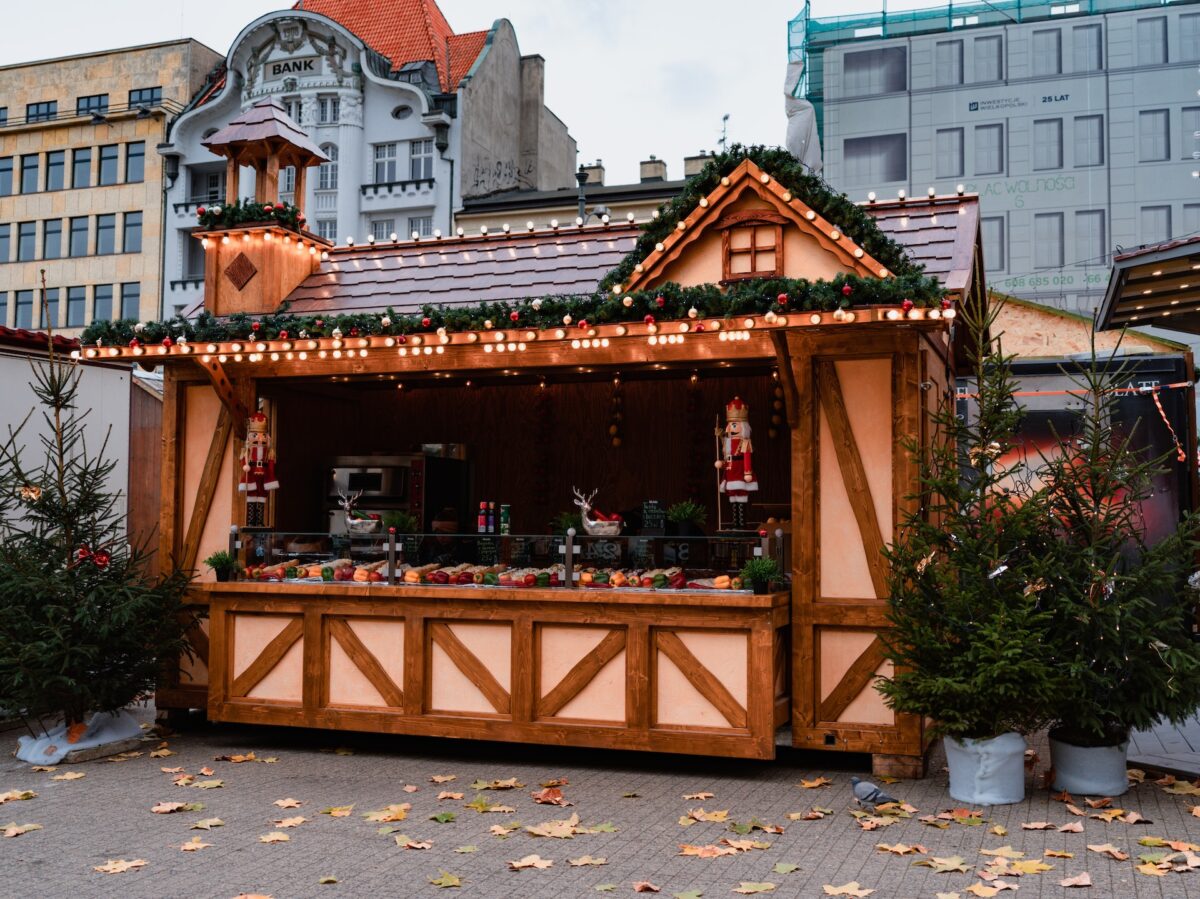
There are two other events that happen every December that are worth visiting Poznań for. The first is the Festival of Art and Artistic Objects, a perfect place to admire some beautiful hand-crafted pieces of art, and maybe find the perfect Christmas present for someone, or at least a nice souvenir to take home. The other interesting Christmas tradition in Poznań is the Ice Festival. Here, you can admire talented artists carving designs into ice with chainsaws. You can watch a speed and artistic competition, where teams of artists spend all day creating their own designs on the ice block!
8. Lublin
Lublin is a charming city within a day-trip distance of Warsaw (look out for an article about Lublin soon). Thus, walking around the Old Town with some snow on the ground is very romantic. However, tradition wise there is very little beyond the splendid Christmas market. However, the market does offer some special activities, such as creating Christmas Nativities, and caroling, which supply some extra color to the market!
9. Katowice
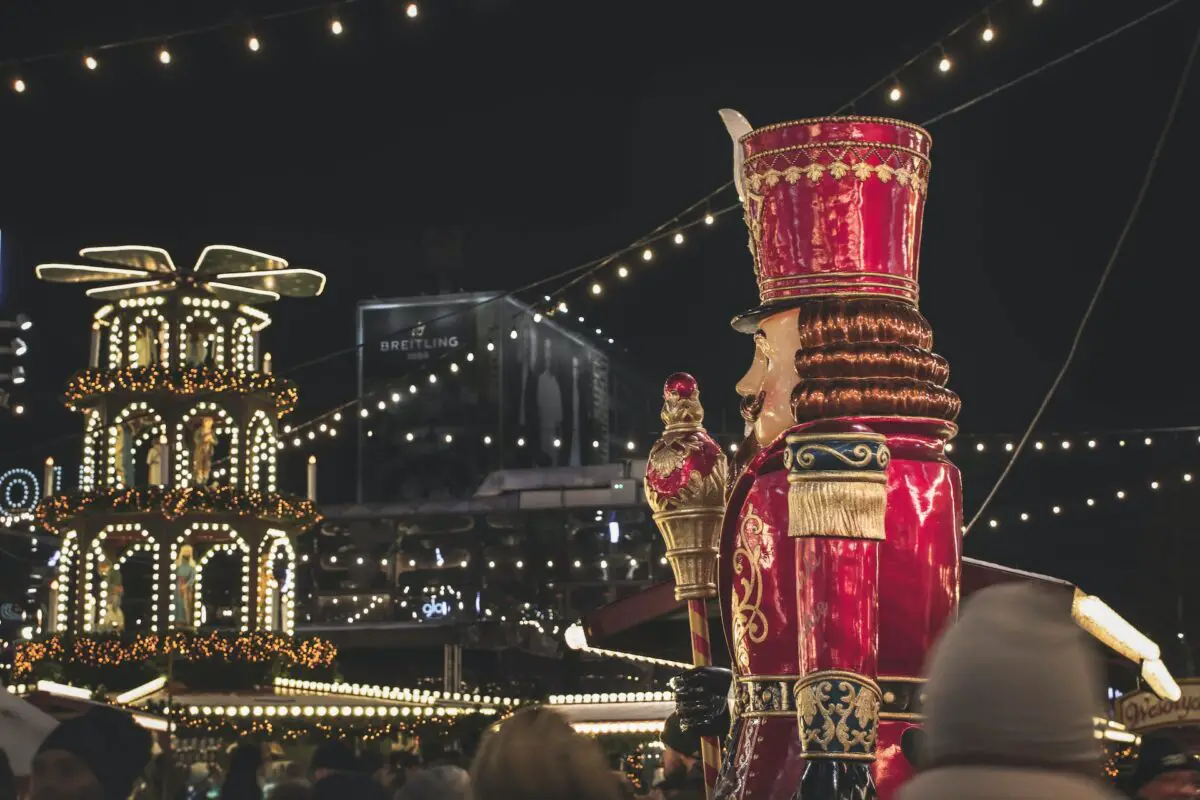
Katowice is a city in Poland you likely will not visit unless arriving to Poland via the budget airport north of Katowice, or if you want to visit such sights as Auschwitz. However, Katowice does have one unique Christmas tradition. Barbórka is a yearly holiday celebrated especially around Katowice, as it is the day of St. Barbara, the patron saint of difficult work, of which mining falls under! Mining is one of the main industries in Katowice traditionally, so thus Barbórka is celebrated here. There will be special parades on December 4th, the saint’s day, and other traditional events involving miner’s outfits and consuming lots of beer. Check it out if you are in Katowice on this day!
10. Łódź
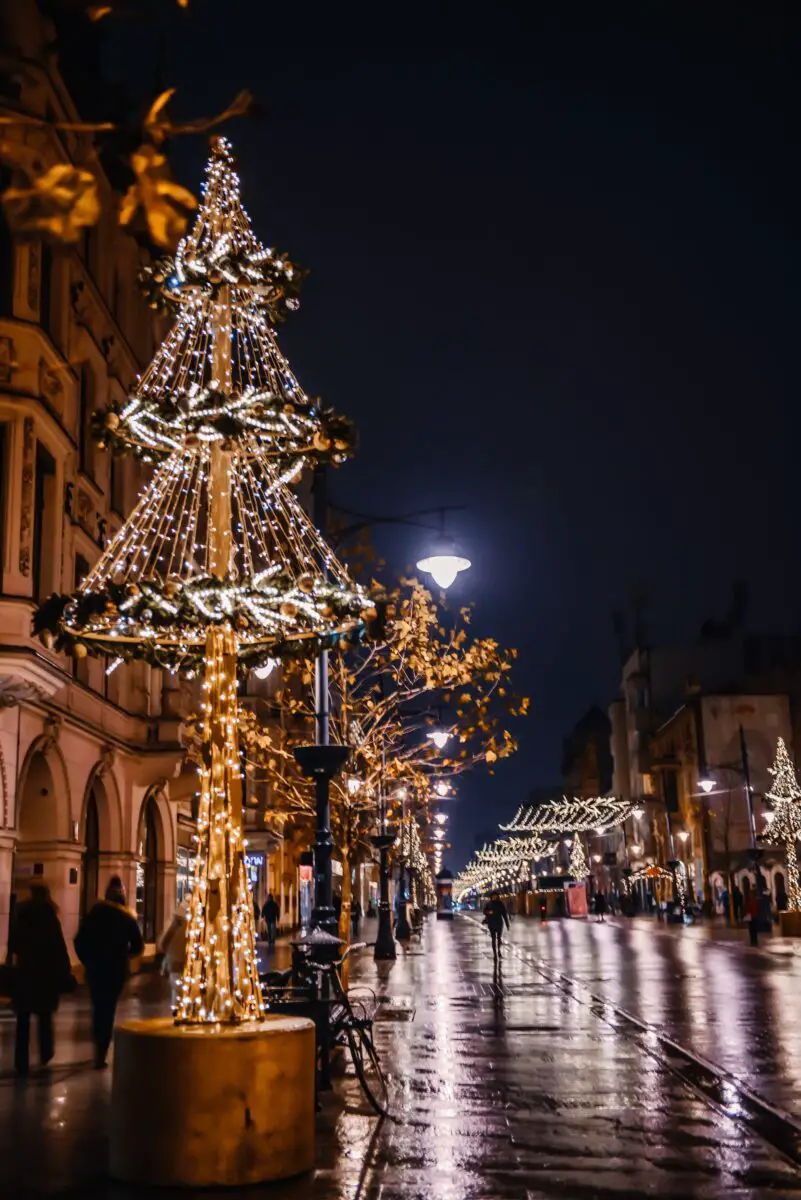
Łódź is one of the largest cities, and not typically visited despite being a short 90-minute train ride from Warsaw. Admittedly, having been there, for a city of its size there is not as much to do as a city like Gdansk or Torun. But, if you are looking to add another Christmas experience to your list, visiting Lodz would be a pleasant experience, and generally uncrowded! A highlight of the market are the Christmas lights along the 5-km long Piotrkowska Street, which creates a romantic walk to share with your loved ones.
Conclusions
Want to keep celebrating beyond December 25th? There are a few important days celebrated in Poland soon after Christmas if you want to stay longer. New Year’s Eve, called Sylwester locally, is celebrated in the same way as the rest of the world, with fireworks, champagne, and parties. From my experience, Poles will use fireworks long into the night, and even into the next morning, so be prepared for that! But Sylwester is certainly an enjoyable time.
The other holiday with some Christmas-like traditions soon after Christmas is Three Kings Day, often called Epiphany in other parts of the world. It celebrates the visit of the three wise men, or magi, to a young Jesus. In Poland, it is often celebrated with big parades, colorful costumes, candy, and more. Church is also attended by many, with churchgoers receiving a piece of chalk to write the initials “KMB” and the current year above their door, with KMB standing for the Polish name for Three Kings Day. This takes place every year on January 6th and is also a public holiday.
So, overall, there is no shortage of ways to celebrate the Christmas season in Poland through some amazing Christmas traditions. All cities in Poland will have something going on. Even if you are visiting a Christmas Market you are still taking part in a grand Polish tradition. If you have family or friends to visit, you will get to see even more of these traditions in place. But no matter where you go, you should be able to enjoy Polish Christmas traditions, some unique, some commonplace. Finally, if you need some more information about Poland in the winter, please visit my earlier guide here.

